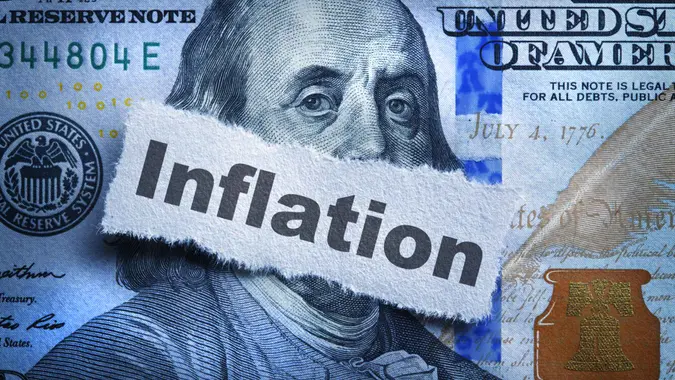Have you ever noticed how your grocery bill seems to creep higher each month, even though you’re buying the same items? Or wondered why your grandparents always talk about how much cheaper things were “back in their day”? The answer lies in a fundamental economic concept that touches every aspect of our financial lives: inflation.
Inflation affects everyone, from the college student buying ramen noodles to the retiree living on a fixed income. It’s the invisible force that gradually erodes the purchasing power of your hard-earned money while simultaneously influencing everything from interest rates to job markets. Understanding inflation isn’t just academic—it’s essential for making smart financial decisions and protecting your economic future.
This comprehensive guide will break down inflation in simple terms, explore how it’s measured, examine its real-world impact on your finances and the broader economy, and provide actionable strategies to help you navigate an inflationary environment. By the end, you’ll have the knowledge needed to make informed decisions about your money and understand the economic headlines that shape our world.
What is Inflation?
Inflation is the general increase in prices of goods and services over time, which correspondingly reduces the purchasing power of money. Think of it this way: if inflation is running at 3% annually, something that costs $100 today will cost $103 next year, assuming all other factors remain constant.
Common Causes of Inflation
Understanding why inflation occurs helps explain its various forms and impacts. Economists typically categorize inflation into two main types:
Demand-Pull Inflation occurs when consumer demand for goods and services exceeds the economy’s ability to produce them. This scenario often happens during periods of economic growth when employment is high, wages are rising, and consumers have more money to spend. When everyone wants to buy the same limited goods, prices naturally rise.
Cost-Push Inflation results from increases in production costs, such as raw materials, labor, or energy prices. When it becomes more expensive to manufacture goods or provide services, businesses often pass these costs onto consumers through higher prices. A classic example is when oil prices spike, leading to higher transportation costs that affect nearly every product in the economy.
How is Inflation Measured?
Measuring inflation requires tracking price changes across a broad spectrum of goods and services that represent typical consumer spending patterns.
Consumer Price Index (CPI)
The Consumer Price Index serves as the primary tool for measuring inflation in the United States. The Bureau of Labor Statistics calculates the CPI by tracking price changes in a “market basket” of approximately 80,000 items that represent what urban consumers typically buy. This basket includes everything from housing and food to transportation and medical care.
The CPI compares current prices to a base year (currently 1982-1984 = 100) to determine percentage changes. When news reports mention the “inflation rate,” they’re typically referring to the year-over-year change in the CPI.
Producer Price Index (PPI)
While the CPI focuses on consumer prices, the Producer Price Index measures the average change in selling prices received by domestic producers for their output. The PPI often serves as a leading indicator of consumer inflation since producer price increases frequently translate into higher consumer prices over time.
Other important inflation measures include the Personal Consumption Expenditures (PCE) price index, which the Federal Reserve uses for policy decisions, and core inflation rates that exclude volatile food and energy prices to provide a clearer picture of underlying inflation trends.
Impact of Inflation on Your Wallet
Inflation affects your personal finances in multiple ways, some obvious and others more subtle but equally important.
Effects on Purchasing Power and Savings
The most direct impact of inflation is the erosion of purchasing power. If your income remains static while prices rise, you can afford less with the same amount of money. This effect particularly hurts those on fixed incomes, such as retirees relying on pensions or Social Security payments that don’t adjust quickly to inflation changes.
Your savings also lose value during inflationary periods. Money sitting in low-interest savings accounts actually decreases in real purchasing power when inflation exceeds the interest rate you’re earning. For example, if inflation is 4% but your savings account only earns 1% interest, you’re effectively losing 3% of your purchasing power annually.
Impact on Wages and Investments
Wages don’t always keep pace with inflation, leading to reduced real income for many workers. However, some employment contracts include cost-of-living adjustments (COLAs) that help protect against inflation’s effects.
Investment portfolios experience mixed effects during inflationary periods. While some assets like real estate and commodities often perform well during inflation, others like bonds typically lose value as interest rates rise to combat inflation. Stock performance varies by sector, with some companies able to pass increased costs to consumers while others struggle with margin compression.
Impact of Inflation on the Economy
Inflation’s effects extend far beyond individual wallets, influencing entire economic systems in complex ways.
Economic Growth Effects
Moderate inflation (typically 2-3% annually) often signals a healthy, growing economy with robust demand and full employment. However, high inflation can become problematic, creating uncertainty that discourages business investment and long-term planning.
Deflation—falling prices—can be even more damaging than moderate inflation. When consumers expect prices to fall, they delay purchases, reducing demand and potentially triggering economic recession.
Central Bank Response
Central banks, particularly the Federal Reserve in the United States, play a crucial role in managing inflation through monetary policy. When inflation rises above target levels, central banks typically raise interest rates to cool economic activity and reduce inflationary pressure. Conversely, when inflation is too low or the economy needs stimulation, they may lower rates or implement quantitative easing programs.
These policy decisions affect everything from mortgage rates and credit card interest to business borrowing costs and currency values, creating ripple effects throughout the entire economy.
Strategies to Combat Inflation
While you can’t control inflation, you can take steps to protect your finances from its effects.
Personal Finance Strategies
Diversify Your Investments: Consider assets that historically perform well during inflationary periods, such as Treasury Inflation-Protected Securities (TIPS), real estate investment trusts (REITs), commodities, and stocks of companies with strong pricing power.
Review Your Budget Regularly: Track spending patterns and adjust your budget to account for rising costs in essential categories like housing, food, and transportation.
Consider Fixed-Rate Debt: If you’re planning major purchases requiring financing, fixed-rate loans become more attractive during inflationary periods since you’ll be paying back the debt with cheaper dollars.
Build Emergency Savings: Maintain an emergency fund, but consider keeping it in high-yield savings accounts or short-term CDs that offer better protection against inflation than traditional savings accounts.
Government Policy Responses
Governments combat inflation through both monetary and fiscal policy. Monetary policy, implemented by central banks, primarily involves adjusting interest rates and money supply. Fiscal policy includes government spending and taxation decisions that can either stimulate or cool economic activity.
Supply-side policies aimed at increasing production capacity, improving infrastructure, or reducing regulatory barriers can help address cost-push inflation by making it easier and cheaper to produce goods and services.
Frequently Asked Questions
Q: Is inflation always bad for the economy?
A: No, moderate inflation (around 2-3% annually) is generally considered healthy for a growing economy. It encourages spending and investment while allowing wages and prices to adjust naturally. However, both high inflation and deflation can create economic problems.
Q: Why don’t wages always keep up with inflation?
A: Wage adjustments typically lag behind price increases because employers need time to assess whether inflation is temporary or persistent. Additionally, not all workers have the bargaining power to demand immediate raises, and some employers may absorb cost increases rather than immediately passing them to employees.
Q: How can I protect my retirement savings from inflation?
A: Consider diversifying your retirement portfolio with inflation-resistant assets like TIPS, real estate, and stocks of companies with strong pricing power. If you’re already retired, you might explore annuities with inflation adjustments or part-time work to supplement fixed income.
Q: What’s the difference between inflation and hyperinflation?
A: Hyperinflation is extremely rapid and typically uncontrollable inflation, usually defined as inflation exceeding 50% per month. Unlike regular inflation, hyperinflation can destroy an economy and currency, making normal economic activity nearly impossible.
Q: How does inflation affect my mortgage?
A: If you have a fixed-rate mortgage, inflation actually helps you by allowing you to pay back your loan with cheaper dollars over time. However, if you’re looking to buy a home during inflationary periods, you may face higher interest rates and home prices.
Building Your Inflation-Resilient Future
Inflation represents one of the most persistent forces in economic life, quietly reshaping the financial landscape whether we pay attention or not. By understanding how inflation works, how it’s measured, and how it affects both personal finances and the broader economy, you’re better equipped to make informed decisions about your money.
The key to managing inflation lies not in trying to predict its exact movements—even experts struggle with this—but in building financial flexibility and diversification into your economic life. Whether through smart investment choices, regular budget reviews, or simply staying informed about economic trends, small steps today can help protect your financial future from inflation’s inevitable effects.
Remember that inflation is a normal part of healthy economic growth. Rather than fearing it, focus on understanding it and adapting your financial strategy accordingly. Your wallet—and your future self—will thank you for taking action today.

